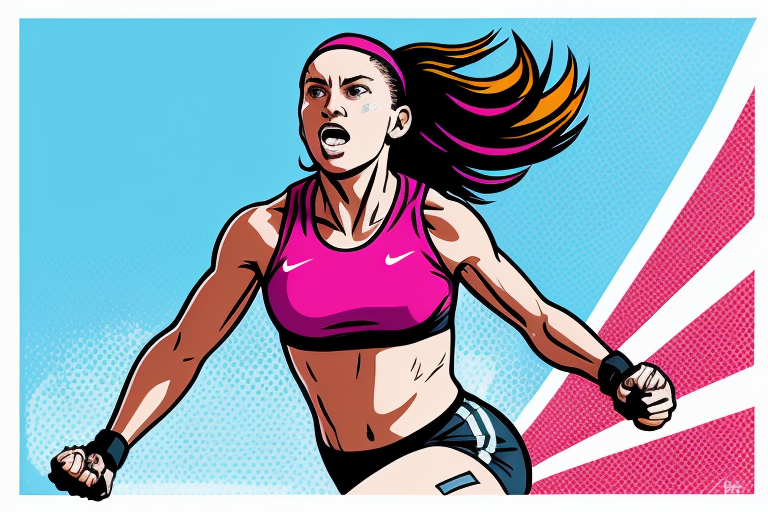Breaking Barriers: The Rise of Women’s Sports
Over the past few decades, women’s sports have experienced a significant increase in popularity and recognition. From Serena Williams dominating the tennis court to Simone Biles defying gravity in gymnastics, female athletes have proven time and time again that they are just as talented and capable as their male counterparts.
But it hasn’t always been this way. Historically, women have faced numerous barriers when it comes to sports, including limited opportunities to participate and societal attitudes that discourage women from being physically active. However, thanks to the hard work and dedication of female athletes and advocates, women’s sports have come a long way.
In this article, we will explore the rise of women’s sports, the notable female athletes who have broken barriers and set new standards, and the challenges that female athletes still face today. By the end of this article, we hope to have shed light on the importance of supporting and uplifting women in sports to break down barriers and make progress towards equality.
The Growth of Women’s Sports
Over the past few decades, the number of female athletes participating in sports has grown significantly. According to the Women’s Sports Foundation, the number of girls playing high school sports has increased from just 295,000 in 1971 to over 3.5 million today. This growth has been accompanied by an increase in the popularity of women’s sports among fans.
One major factor contributing to this growth is the increased media coverage of women’s sports. In recent years, there has been a push to create dedicated leagues for women’s sports, such as the WNBA and NWSL, and to include women’s events in major competitions like the Olympics. This increased visibility has helped to raise awareness of women’s sports and to showcase the incredible talent of female athletes.
Notable Female Athletes
Of course, no discussion of women’s sports would be complete without mentioning some of the incredible female athletes who have made an impact. Serena Williams, for example, is widely regarded as one of the greatest tennis players of all time, with 23 Grand Slam singles titles to her name. Simone Biles, meanwhile, has revolutionized the sport of gymnastics with her incredible athleticism and skill, winning a total of 30 Olympic and World Championship medals. And Megan Rapinoe, the captain of the US women’s soccer team, has used her platform to advocate for social justice and equality both on and off the field.
These women, and many others like them, have broken down barriers and set new standards for what is possible in women’s sports. They serve as role models for young girls and inspire us all to push ourselves to be the best we can be.
Challenges Faced by Female Athletes
Despite the progress that has been made, female athletes still face numerous challenges. One of the most significant is the pay gap between male and female athletes. According to a 2019 report by the Women’s Sports Foundation, female athletes in the US earn just 83 cents for every dollar earned by male athletes. This gap is even wider for women of color, who face additional barriers due to race and ethnicity.
Another challenge faced by female athletes is the lack of media coverage for women’s sports. Despite the growth of women’s sports in recent years, they still receive far less coverage than men’s sports. This lack of visibility not only makes it harder for female athletes to gain recognition and endorsements, but it also perpetuates the idea that women’s sports are less important or exciting than men’s sports.
Conclusion
The Social Media Effect
The rise of women’s sports can be attributed to many factors, including increased opportunities for girls to participate in sports and changing societal attitudes towards women’s athleticism. However, one factor that cannot be overlooked is the impact of social media. Platforms like Twitter, Instagram, and TikTok have played a significant role in promoting women’s sports and elevating female athletes to superstar status.
Social media has given female athletes a platform to showcase their talents and personalities in a way that was not possible before. They can connect directly with fans, share behind-the-scenes glimpses of their lives, and speak out on important issues. This has helped to humanize female athletes and make them more relatable to fans.
One athlete who has leveraged social media to great effect is Serena Williams. With over 10 million followers on Instagram, she uses the platform to share photos and videos of her training, family life, and fashion ventures. She also uses her platform to promote causes she cares about, such as gender equality and racial justice. By sharing her life with her fans, she has become more than just a tennis player; she is a cultural icon.
Another athlete who has made waves on social media is Simone Biles. With over 5 million followers on Instagram, she uses the platform to showcase her gravity-defying gymnastics routines and share glimpses of her life outside the gym. She has also been vocal about her struggles with mental health, which has helped to destigmatize the issue and raise awareness.
Social media has also given rise to new opportunities for female athletes. In recent years, we have seen the creation of dedicated leagues for women’s sports, such as the WNBA and NWSL. These leagues have gained popularity in part due to the increased exposure they receive on social media. Fans can now follow their favorite teams and players online, and engage with them in ways that were not possible before.
However, social media has also brought its own set of challenges for female athletes. They are often subjected to online harassment and abuse, which can take a toll on their mental health. They are also under constant scrutiny from fans and the media, which can be overwhelming.
Despite these challenges, social media has had a net positive effect on the rise of women’s sports. It has given female athletes a voice and a platform to showcase their talents, and has helped to elevate them to the same level of stardom as their male counterparts. As we continue to support and uplift women in sports, we must also be mindful of the impact that social media can have, and work to create a safe and inclusive online environment for all athletes.
Frankie Uvanni’s son is a huge fan of Simone Biles, and he loves watching her videos on TikTok. He thinks it’s cool that he can connect with his favorite athlete online.
Female Athletes as Role Models
Female athletes have not only made significant strides in their respective sports but have also become powerful role models for young girls around the world. Serena Williams, Simone Biles, and Megan Rapinoe are just a few of the many female athletes who have broken barriers and inspired a generation of young girls to pursue their dreams.
Serena Williams is a tennis legend who has won 23 Grand Slam singles titles, the most by any player in the Open Era. She has also been a vocal advocate for women’s rights and has used her platform to raise awareness about issues such as pay inequality and racial injustice. Williams has inspired countless young girls to take up tennis and has shown them that they too can achieve greatness with hard work and determination.
Simone Biles is a gymnastics superstar who has won 30 Olympic and World Championship medals, the most by any gymnast in history. She has also been open about her struggles with mental health and has used her platform to raise awareness about the importance of mental health care. Biles has inspired young girls to pursue their passions and has shown them that it is okay to prioritize their mental health and well-being.
Megan Rapinoe is a soccer icon who has won two Olympic gold medals and a World Cup. She has also been a vocal advocate for LGBTQ+ rights and has used her platform to raise awareness about issues such as pay inequality and police brutality. Rapinoe has inspired young girls to stand up for what they believe in and has shown them that they too can make a difference in the world.
These female athletes have not only achieved greatness in their sports but have also used their platforms to make a positive impact on society. They have shown young girls that they can be strong, confident, and successful, regardless of their gender. They have also broken down barriers and paved the way for future generations of female athletes to follow in their footsteps.
However, female athletes still face many challenges, including the pay gap between male and female athletes and the lack of media coverage for women’s sports. Despite these challenges, female athletes continue to inspire and empower young girls around the world. They are breaking down barriers and making progress towards equality, both on and off the field.
Breaking Down Barriers: The Challenges Faced by Female Athletes
Despite the growth of women’s sports and the accomplishments of female athletes, they still face significant challenges. One of the most significant issues is the pay gap between male and female athletes. According to a report by Forbes, the highest-paid male athlete in 2020, Roger Federer, earned $106.3 million, while the highest-paid female athlete, Naomi Osaka, earned $37.4 million. This pay gap is not unique to tennis and is prevalent across most sports.
One reason for this pay gap is the misconception that women’s sports are less profitable. However, this is not entirely accurate. While women’s sports may not generate the same revenue as men’s sports, they still have a significant following. For example, the 2019 Women’s World Cup final between the United States and the Netherlands drew in 82.18 million viewers worldwide, making it the most-watched soccer match in U.S. history. Despite this, the members of the U.S. women’s soccer team earn significantly less than their male counterparts.
Another challenge faced by female athletes is the lack of media coverage for women’s sports. According to a report by the Tucker Center for Research on Girls & Women in Sport, women’s sports receive only 4% of sports media coverage. This lack of coverage not only affects the visibility of female athletes but also impacts their ability to secure sponsorships and endorsements.
The reasons behind this lack of coverage are complex, but one contributing factor is gender stereotypes. Many people still hold the belief that women’s sports are less exciting or less competitive than men’s sports. However, this is simply not true. Female athletes are just as talented and dedicated as their male counterparts, and their accomplishments deserve recognition.
To address these challenges, we must advocate for equal pay for female athletes and increase media coverage for women’s sports. This can be achieved through a variety of means, such as increased funding for women’s sports programs, more sponsorship opportunities for female athletes, and increased media coverage of women’s sports events.









